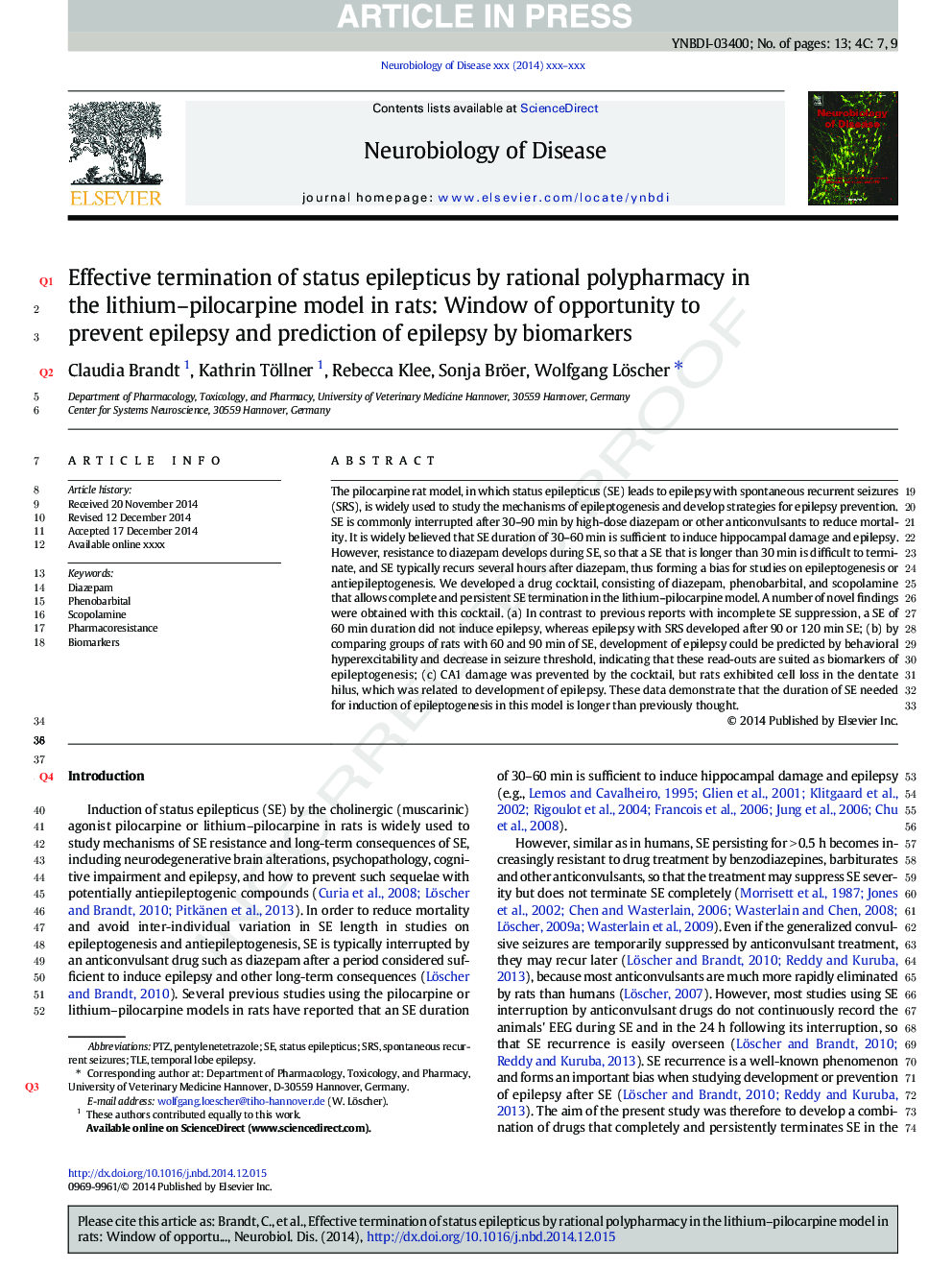| Article ID | Journal | Published Year | Pages | File Type |
|---|---|---|---|---|
| 6021847 | Neurobiology of Disease | 2015 | 13 Pages |
Abstract
The pilocarpine rat model, in which status epilepticus (SE) leads to epilepsy with spontaneous recurrent seizures (SRS), is widely used to study the mechanisms of epileptogenesis and develop strategies for epilepsy prevention. SE is commonly interrupted after 30-90Â min by high-dose diazepam or other anticonvulsants to reduce mortality. It is widely believed that SE duration of 30-60Â min is sufficient to induce hippocampal damage and epilepsy. However, resistance to diazepam develops during SE, so that an SE that is longer than 30Â min is difficult to terminate, and SE typically recurs several hours after diazepam, thus forming a bias for studies on epileptogenesis or antiepileptogenesis. We developed a drug cocktail, consisting of diazepam, phenobarbital, and scopolamine that allows complete and persistent SE termination in the lithium-pilocarpine model. A number of novel findings were obtained with this cocktail. (a) In contrast to previous reports with incomplete SE suppression, a SE of 60Â min duration did not induce epilepsy, whereas epilepsy with SRS developed after 90 or 120Â min SE; (b) by comparing groups of rats with 60 and 90Â min of SE, development of epilepsy could be predicted by behavioral hyperexcitability and decrease in seizure threshold, indicating that these read-outs are suited as biomarkers of epileptogenesis; (c) CA1 damage was prevented by the cocktail, but rats exhibited cell loss in the dentate hilus, which was related to development of epilepsy. These data demonstrate that the duration of SE needed for induction of epileptogenesis in this model is longer than previously thought.
Keywords
Related Topics
Life Sciences
Neuroscience
Neurology
Authors
Claudia Brandt, Kathrin Töllner, Rebecca Klee, Sonja Bröer, Wolfgang Löscher,
